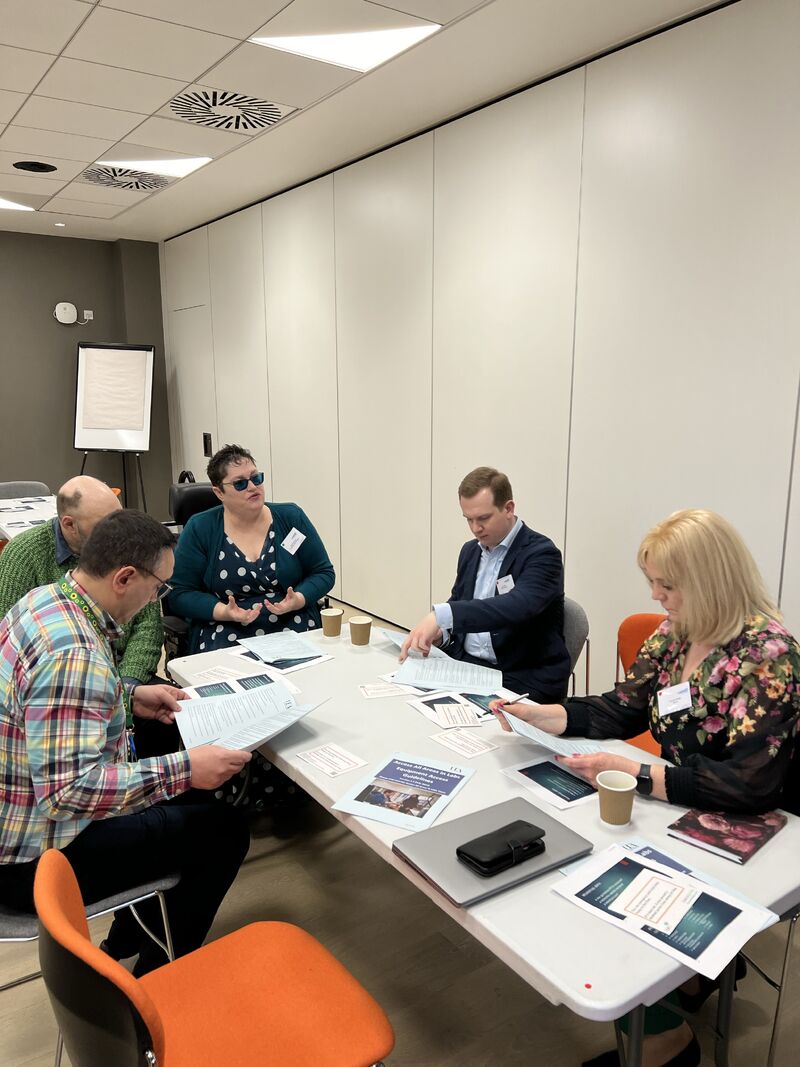
Workshop Summary: Laboratory Access Challenges, Data Capture and Solutions
The ‘Laboratory Access Challenges, Data Capture and Solutions’ workshop was held on the 13th of March at the Institute for Regeneration and Repair, University of Edinburgh, hosted by the Cell and Gene Therapy Catapult (CGT Catapult), the University of East Anglia (UEA), and Heriot-Watt University (HWU). The goal of the workshop was to better understand the access challenges facing disabled laboratory operators working in the biological sciences and explore solutions through co-design. Attendees from the pharmaceutical industry, equipment vendors, academia, charity, and UK Research & Innovation (UKRI) were asked to seek consensus on equipment-related barriers to accessibility and identify potential technologies offering solutions.
The two key presenters were Dr Katherine Deane, University of East Anglia and Dr Mauro Dragone, Heriot-Watt University, UK National Robotarium, who presented on “Accessible Lab Design: Where we are and where we want to be” and “Ambient Assisted Living Technology: Sensor-based home activity monitoring, machine learning, AI and assistive robotic technology”, respectively.
It was discussed how identification of the challenges must start with a review of the current guidelines for laboratory design and build, and it was agreed that greater detail and a need for consensus guidelines and standards is required.
A general lack of awareness of issues facing disabled sciences hampers wider dissemination. Disabled Led Organisations (DLOs) and relevant charities have a role to play in working with scientific facilities to better inform on possible solutions that could be implemented with minor modifications, e.g., height adjustable benching, hearing technology solutions, variable lighting, and quiet spaces.
Laboratory cultures vary but it was agreed that accessing reasonable accommodations can sometimes be challenging. Whilst it is reasonable for employers to ask for evidence of accommodation need, they should trust disabled scientists if they specify solutions that have previously worked for them. Funders such as UKRI are beginning to identify how to provide funds for reasonable accommodations for disabled scientists, and how these can be built into the grant application process. There is also recognition that disabled research participants should have their needs accommodated within the design of the research protocol. A greater emphasis on the provision of reasonable accommodations for disabilities (both for researchers and the researched population) within the broad equality, diversity and inclusion (EDI) guidance in grant calls is encouraged.
A series of short video clips was generated by CGT Catapult to demonstrate typical operations performed by scientists working in a research and development laboratory handling Advanced Therapy Medicinal Products (ATMPs). During the workshop, participants were presented with examples of data capturing techniques that can be used to build models of lab activities. These can then be simulated using computer simulation techniques to support the design and the optimisation of lab environments. Specifically, simulations could be used to predict the accessibility in manual handling of lab equipment, testing “what if” scenarios including early assessment of forms of robotic automation, and to assess and verify communication within the work environment, considering mobility, sight, hearing and neurodiversity.
Combined with Augmented Reality (AR) technology, this type of simulation can support ‘empathetic testing’. This simulation enables real-world situations to be sensed as someone with an impairment, which can aid in laboratory accessibility testing for people with auditory or visual impairments. A range of solutions emerging from such tests could be envisaged, ranging from architectural features including equipment status/feedback and barcodes, to voice activated protocols and simple adaptions for actions such as twisting off lids.
There is a requirement for a rich, quantitative dataset that describes how physical disabilities are to be coded into empathetic learning scenarios. For example, the range of visual distortions present in common eye disease diagnoses, or the range of movement of arms after spinal injury. This would likely involve close collaboration between charities and academia to ensure the database remain opensource. The emerging technology could be used to support and enhance ongoing efforts from equipment vendors, for example, automated workflows, pre-programmed user profiles and LCD/touch screens with choice of colour contrast. Increased research into empathetic simulations may establish technology that improves experimental reproducibility and reduces operator error for scientists of all physical abilities.
The co-design approach to the workshop was successful in defining areas for increased focus and study across the sectors with support from charities and research councils. Holistic access solutions for laboratory environments will have substantial generalisability across different scientific disciplines, especially when technology is coupled with a greater cultural awareness of anti-ableism.
We would like to thank all those who attended the workshop for offering their insights into the key disability access issues faced by laboratory operators and potential solutions to manage and overcome these.
)
)
:focus(1473x764:1474x765))